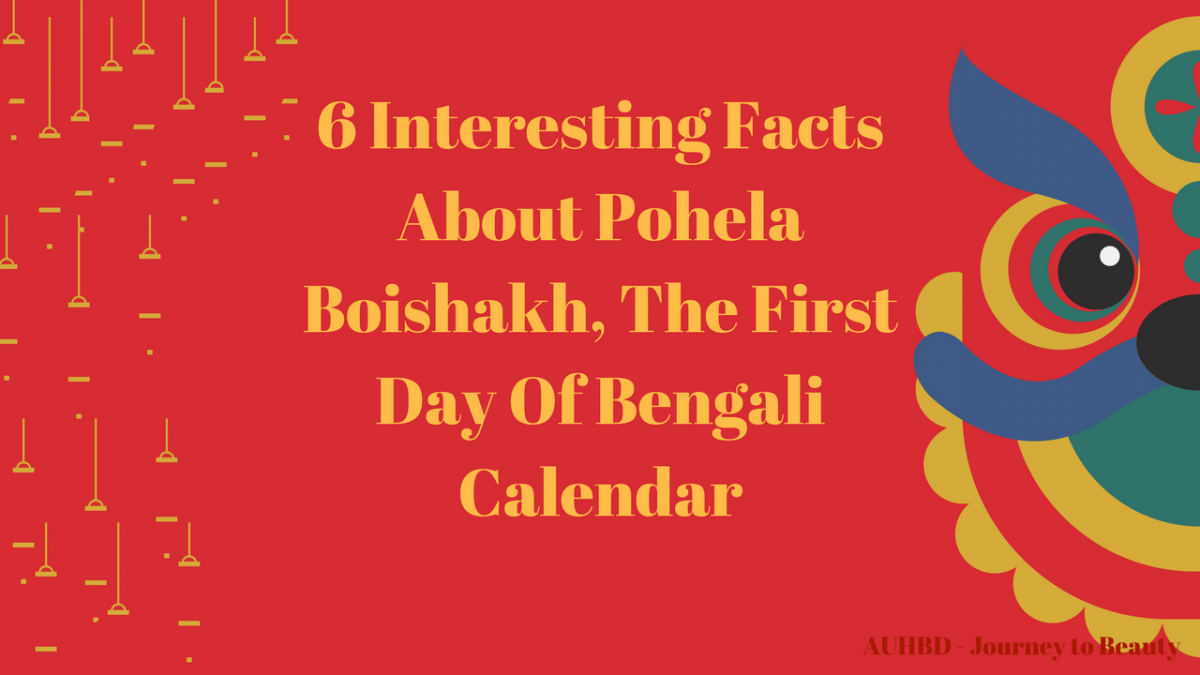The sun seems in a hurry; may the sun is preparing to rise with new energy and a new spirit in the sky of New Year, along with 215 million Bengali people around the world. There are few days left in the current year; enthusiastic Bengalis are preparing to invite their most colorful festival “Pohela Boishakh” on the next 14 April. Pohela Boishakh, the first day of Bengali Year is a vivid, colorful festival that brings also some unique rituals.
This post will introduce you to some interesting facts about the Pohela Boishakh or Bangla New Year.
Fact 1
Bengali day begins at sunrise and ends at sunset. Many people, even Bengali people don’t know when the days start! They start to greet their families and friends at midnight, on 14 April or Pohela Boishakh, but it’s not about English day that begins at 12 AM, it’s about Bengali day. So, all Pohela Boishakh festivities start from the first prahar, which means the first hours of the day.
Read another post 6 Interesting Facts About the Bengali Language
Fact 2
Bangladesh officially follows the modified version of the Bengali calendar since 1987. Due to the modification, the New Year festival always falls on 14 April in Bangladesh. In 1966, a committee was appointed by Bangla Academy, Dhaka, which made the first five months 31 days, rest seven months 30 days, and Falgun, the last month of the Bengali calendar adjusted to 31 days in every leap year.
Fact 3
There are many stories about the origin of Bengali Year. However, the most valid one is connected to the Mughal Empire and its tax collecting customs. In the old Bengal, a solar calendar was already in use and known as Fasholi Shan (harvest calendar), but it was contrasted with the Mughal rule of collecting land taxes from Bengali people because the Mughal followed the Hijri calendar.
When the Mughal envoys came to collect taxes, the countrymen that were completely dependent on crops would still be waiting to reap crops from the fields. Then, Akbar, the third Mughal emperor (1556-1605) asked the royal astronomer to create a new calendar by combining the lunar and solar calendars.
Read another post Traveling To Syria? The Things You Will Miss In Present Syria!
Fact 4
Bangla New Year is a festival of all Bengali people regardless of class, caste, religion, and regional diversities. This festival celebrates not only in Bangladesh and also in West Bengal, Assam, Tripura, Odisha and all over the world wherein Bengali communities stay. In the Fiesta, all people wear festive dresses; women wear special white-red sarees and adorn their hair with flowers, and men wear Panjabis, an item of bengali male clothing. People eat festive foods; the special menu of Pohela Boishakh includes Panta Bhat (watered rice) with fried Hilsha fish and a big variety of bhartas.
Fact 5
In urban Bangladesh, Mongol Shovajatra is one of the biggest attractions of Pohela Boishakh. In Dhaka, the Mangal Shobhajatra is organized by the Fine Arts Institute at Dhaka University. An interesting fact about this parade is that it received an honor of the cultural heritage of humanity by UNESCO in 2016. In rural Bangladesh, Boishakhi fairs are arranged all over the country and continued for a minimum of one week. Different types of sports, including Nouka Baich (boat race), Kite Flying, Bull Racing, Cockfights, and Pigeon Racing are also organized.
Read another post One Night Guest — A Short Story
Fact 6
Haalkhata Ritual is a ritual of Bangla New Year. In Pohela Boishakh, Traders, particularly in rural areas, close all old ledgers and open a new one with new entries. The traders also send invitations to all their existing customers for entertaining them with sweets and also clearing out the old accounts.
Since you’re here… if you like this post or somewhat like this post, even don’t like this post leave a comment so we can improve.
For more new contents, like or follow our journey on Facebook. and Twitter.
We are also on YouTube, please stay with our journey to beauty.
